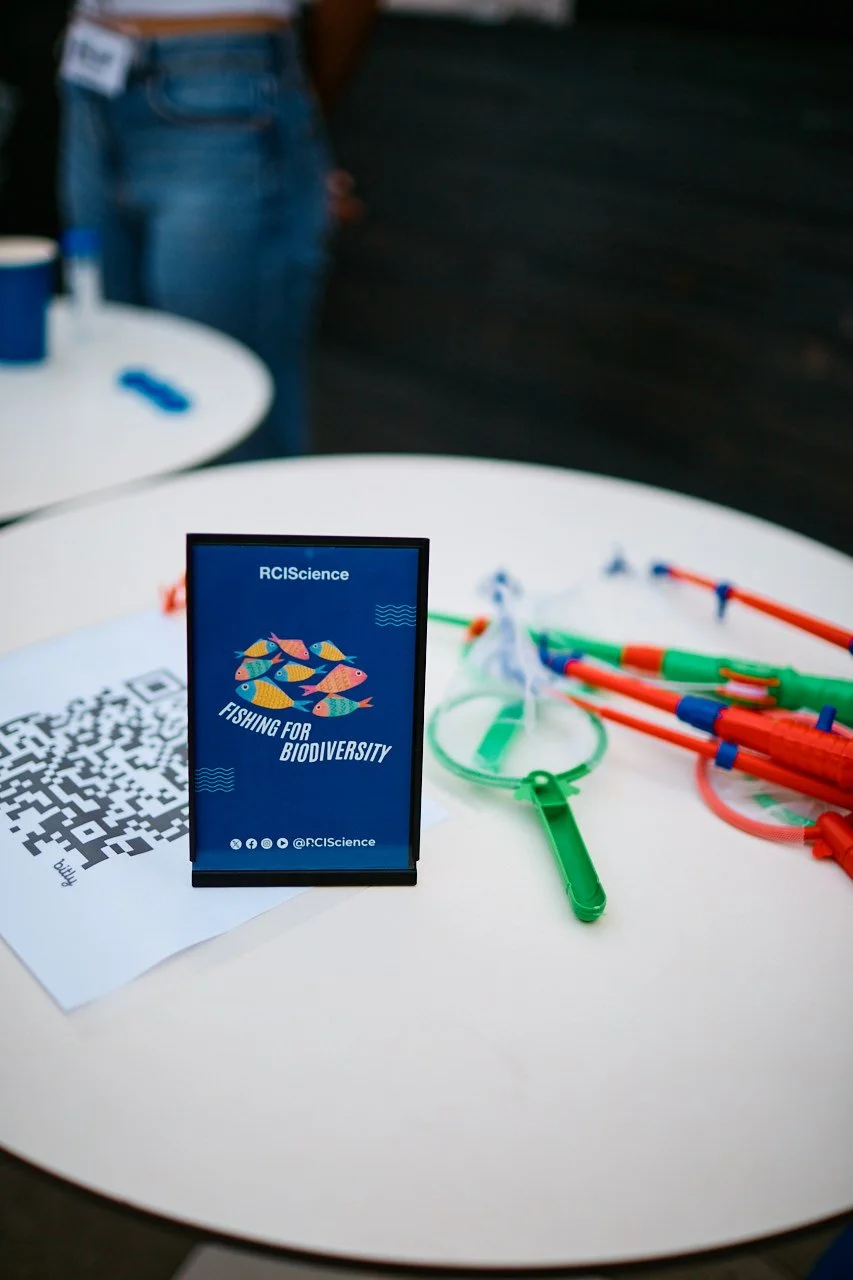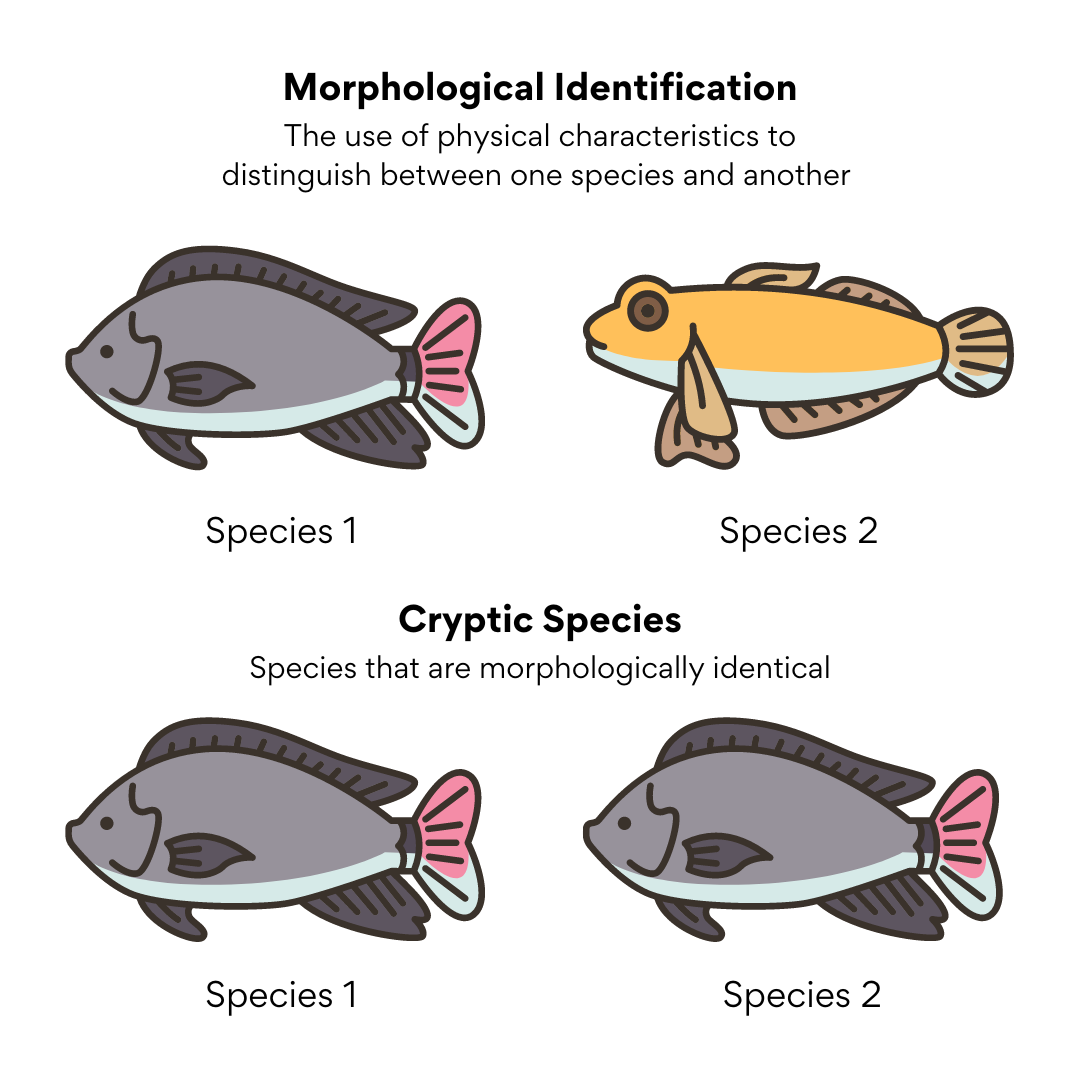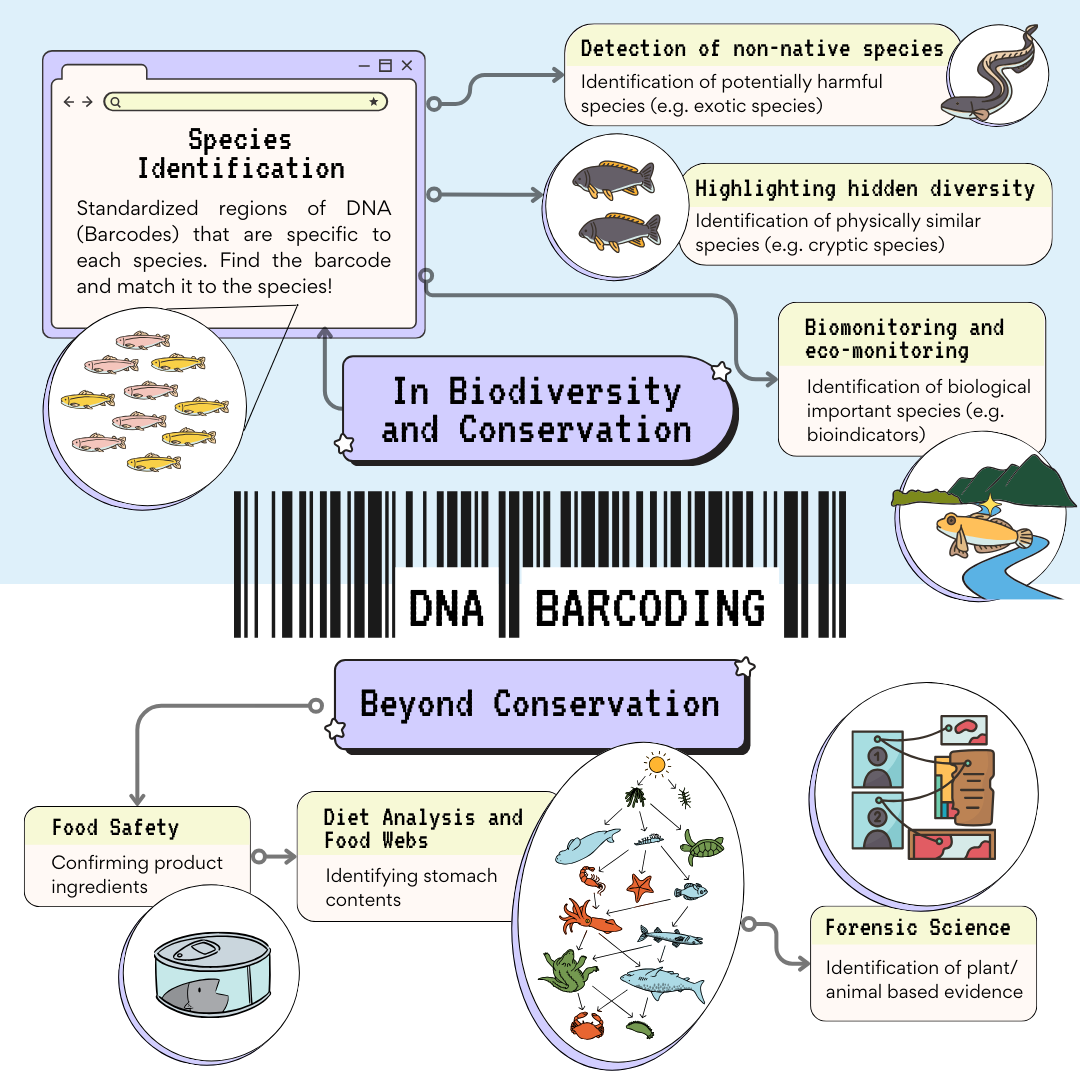Red Fish, Blue Fish, Which Fish is Which Fish?
Forget Where’s Waldo–who even is Waldo? Why successfully identifying animals is the cornerstone of conservation.
Knowing what species of animals are present in an area of interest is a critical aspect of conservation. It helps us understand which species need to be conserved. But being able to reliably tell one species apart from another isn’t always straightforward.
Scientists use several different strategies to do this. One method is to simply use the physical characteristics of a species– its morphology–to identify it. This is called morphological identification. We do this all the time without thinking about it! For example, how do you tell the difference between a horse and donkey? For starters, they look different!
When scientists are trying to determine the diversity of an area (biodiversity), they will go into that area and identify individuals of different species using their morphology. This is called fieldwork and individuals or species identified in the field are often done using field morphology.
Scientists will also visit museums and analyze the individuals belonging to species captured from the same area. Individuals and species identified in museums are often done so using museum morphology. This is one reason why museums are so important–the specimens they have allow scientists to look at biodiversity more easily and over time!
Unfortunately, there are also some hurdles to overcome in DNA barcoding. One challenge in using DNA barcodes, is that there needs to be a reference barcode for every species. If we are not sure what species are found in an area or we haven’t studied the species in depth, it can be hard to figure out what references to use. All is not lost though! Over time, we learn more and more about life all over the world. The more we learn, the easier it becomes to tell species apart and studying their DNA helps. We are always getting better at assigning barcodes to species, which helps us to identify individuals later.
DNA barcoding can be especially helpful in highlighting cryptic species, but it is also useful in identifying non-native (sometimes invasive) species that are new to an area and identifying ecologically important species. DNA barcoding also has applications in food safety, diet analysis studies, and forensic science. Check out the resources below if you want to learn more about barcoding applications.
The most reliable way of determining what species are present in a given area is to take an integrative approach ie. to combine data using both physical characteristics and DNA evidence. Scientists can also incorporate other data to make identifications even more robust, such as photographic evidence and oral histories from local people.
Conserving the incredible diversity of life on earth has become one of the greatest challenges and priorities of the modern era. Efforts to conserve biodiversity are most effective when we know what species are present in an area. Scientists utilize different methods like morphological identification, DNA barcoding and integrative approaches to help determine this biodiversity.
Conservation managers can use scientific research to monitor changes in biodiversity over time, helping identify next steps in conservation efforts and creating a more sustainable world for all living things.
About the Author
Taegan Perez is a 3rd year PhD student in the Biology department at York University in Toronto. Her current research focuses on the relationship between the visual system and the environment in amphibians. Previously she focused on methods for specimen/species identification in Central American freshwater fishes. Overall, her goal is to highlight the importance of understanding diversity and the influence of environmental differences on the evolution of biodiversity as we seek to conserve life on Earth.
This blog post and the following interactive quiz was completed as part of RCIScience’s SciComm Foundations Course.
As we celebrated 175 years of sparking curiosity, we brought this blog post to life through a hands-on demonstration, accompanied by a digital guide below.










